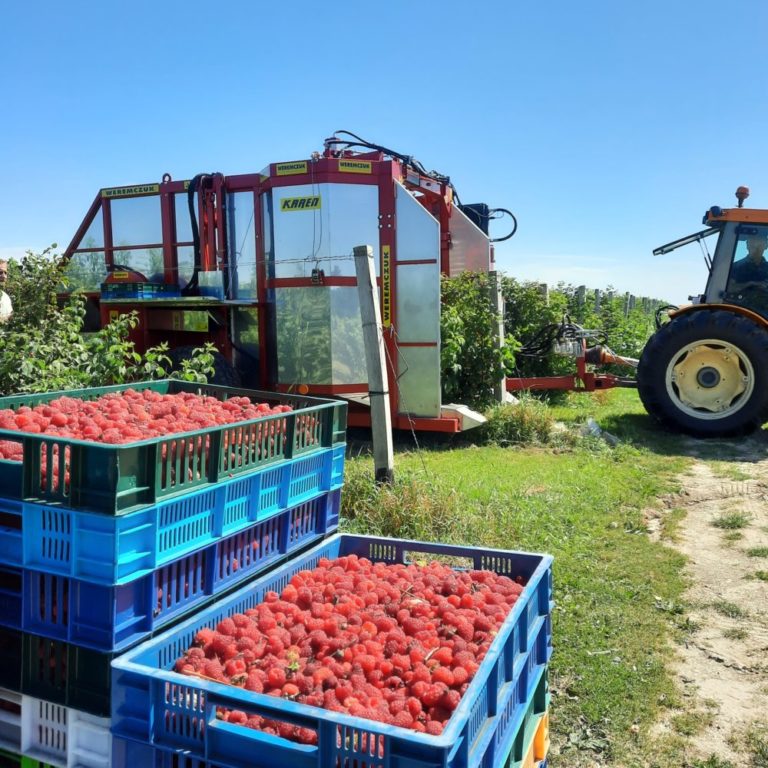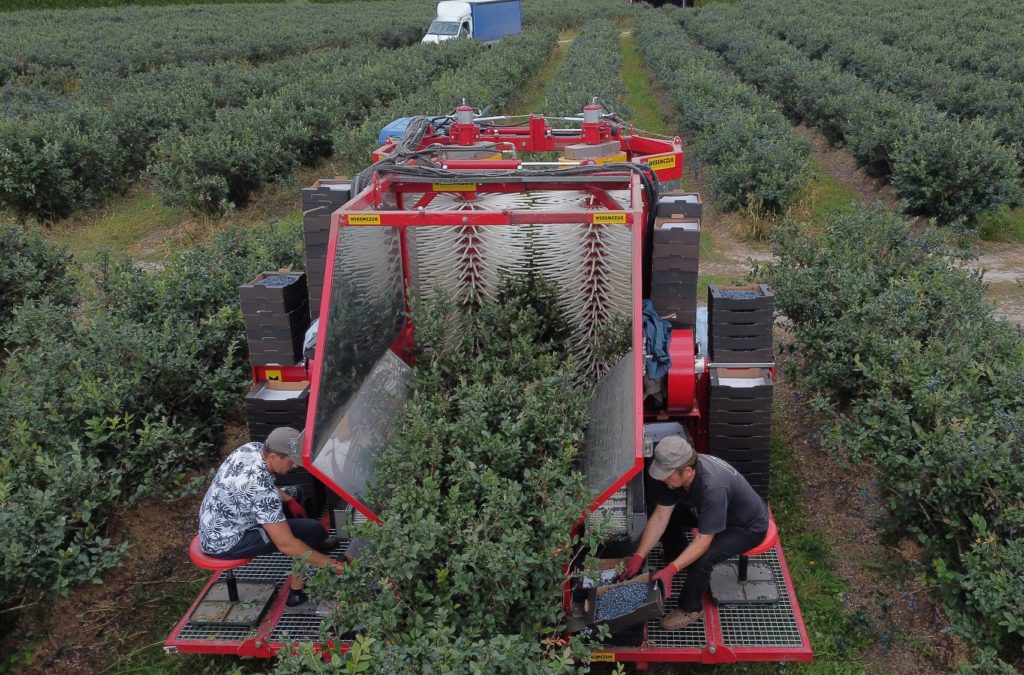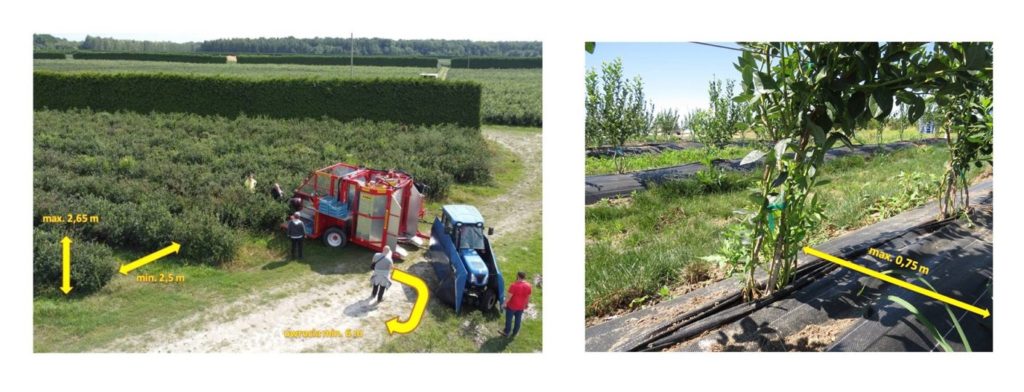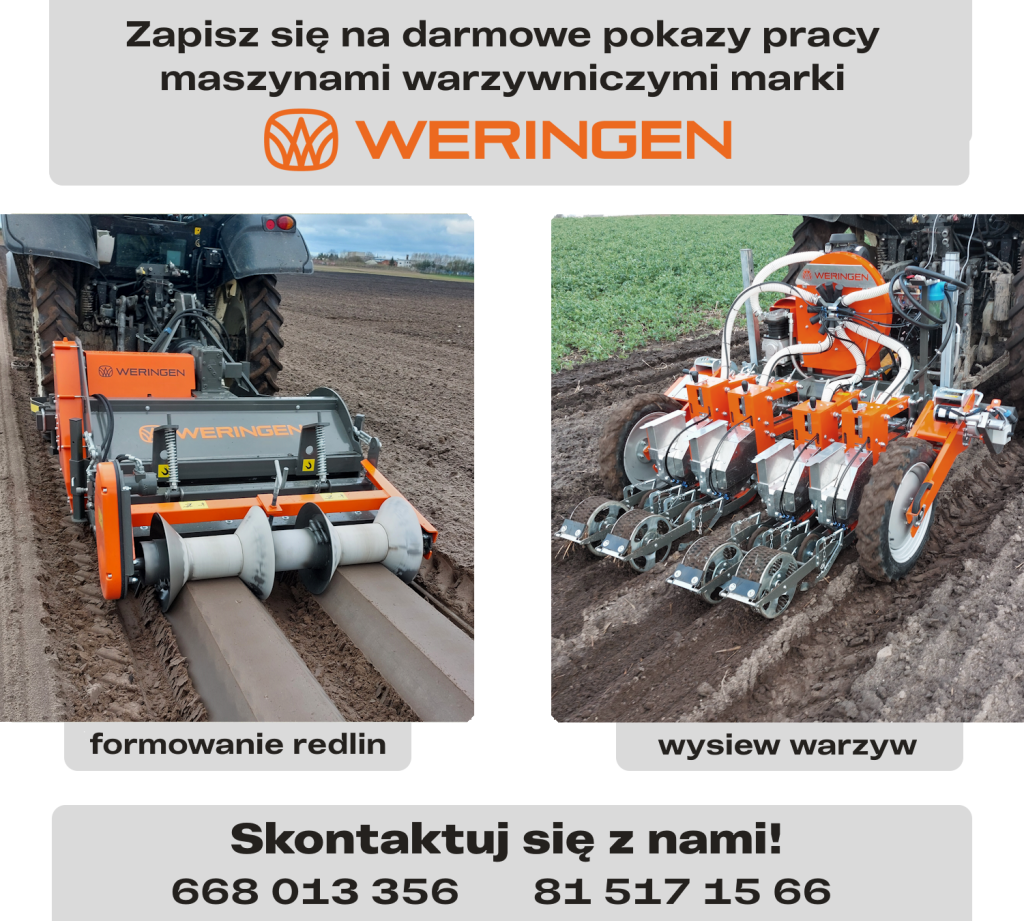Blog
Does mechanical harvesting of raspberries and blueberries pay off?
In Poland, three-quarters of raspberries produced are later processed. The processing industry gets increasingly interested in blueberry. Hence, a chance to maintain fruit production for processing is to harvest it with a mechanical harvester. As prices go lower and people are more reluctant to work, mechanical harvesting is the only way to reap fruit and keep the business up.
It gets harder to find workers to pick fruit. Our product makes its’ way for processing and the price and, at the same time, the fruit market is unstable. In this case, mechanically harvesting fruit is the only option. It can complement manual reaping of fruit or supersede it altogether.
KAREN berry harvester is designed to harvest blueberry, raspberry and haskap. For years it has been working successfully on plantations all over the world. This year we organized a demonstration to present the machine. During such shows farmers could see and evaluate: the machine’s work, adaptation of their plantation to use the machine and the quality of harvested fruit.
Lightweight construction – high efficiency
Tow behind harvester KAREN has two vertical shakers with amplitude-regulated shaking heads. Lightweight construction and wide tires allow the machine to work properly in almost all conditions. Well-designed catchers quickly and effectively seal bushes’ sprigs to protect them from getting damaged. Moreover, shaking rods and conveyors are made of special material. Harvested fruit is of high quality and well cleaned of any debris. Based on users’ opinions, the KAREN fruit harvester does not negatively affect future crops.
Delicate for fruit and bushes
Vertical shakers and shaking rods provide efficient fruit shaking, even with the weakest and most sensitive shakers settings. KAREN has a wide range of adjustments. It allows farmers to pick only ripe fruit or all of them. Harvested fruit is later cleaned and moved along a conveyor belt to totes on a working deck. During this stage, fruit can also be hand-selected on two longitudinal conveyor belts. Depending on the harvesting phase, fruit ripeness and varieties, premium grade fruit can be the final product. On the working deck, in a sorting area, there is space to accommodate staff and the person who changes totes. The working deck can also be enlarged.
Tow behind or self-propelled harvester – pros and cons
KAREN works with tractors with a minimum power output of 68 HP. When choosing a tractor, we think about parameters such as fuel efficiency. Nowadays, it is increasingly important in the face of fuel prices going up. KAREN berries harvester is an economical choice for producers of raspberries or blueberries. Usually, they have small or mid-sized plantations, where mechanical harvesting complements hand-picking fruit. There are more advantages:
- Much lower price of a trailed harvester compared to a self-propelled one; however, harvesting effectiveness is similar.
- Tow behind harvesters are easier to transport between plantations.
- There is no such a thing as ‘drivetrain failure’ or ‘engine failure’; that situation could immobilize the machine for a long time.
- AC-equipped tractors increase operator’s comfort, which is an added benefit.
Best raspberries and blueberries harvesting conditions
Construction of the KAREN harvester allows for efficient work on plantations with distance between rows as little as 2,5 meters. Fruit can be either growing on flat fields or on beds, also with T-supports or with no supports.
The machine’s suspension can be raised on wheel columns. It allows to set the harvester’s position low above the ground during the crop-picking process. It is also possible to work on slopes and going over field obstacles. If the KAREN harvester is equipped with turning wheels, it needs 6 meters of headland. If the row is kept narrow up to 45 cm from the ground, it further increases the sealing system efficiency. Fruit loss is therefore kept to a minimum.
Does mechanical harvesting pay off?
In Poland, three-quarters of raspberries produced are later processed. The processing industry gets increasingly interested in blueberry. Therefore, a chance to maintain fruit production for processing is to harvest it with a mechanical harvester.
At one of our clients’ fields, 50 tonnes of fruit were mechanically harvested in the 2021 season. The plantation’s area is 36 ha, the final product was sold for processing at a price of €0,8-1,2 per kilogram and the staff consisted of 4 people. Instead of 400 people, 230 people worked at the plantation. The cost of purchase can pay back during one season.
On a plantation with an area of a few acres, provided that the efficiency of the plantation is 8-10 tonnes/h and calculated using prices from 2021, the cost of the machine would pay back the same year. In next years, with lower prices and no people to work, mechanical harvesting will be the only way to reap fruit and keep the business going. Will it make sense financially? Everybody has to answer that question to themselves.
If you want to know more and find out if your plantation is suitable for mechanical harvesting, do not hesitate to contact us! We can help you choose the best solution for You and Your farm!







